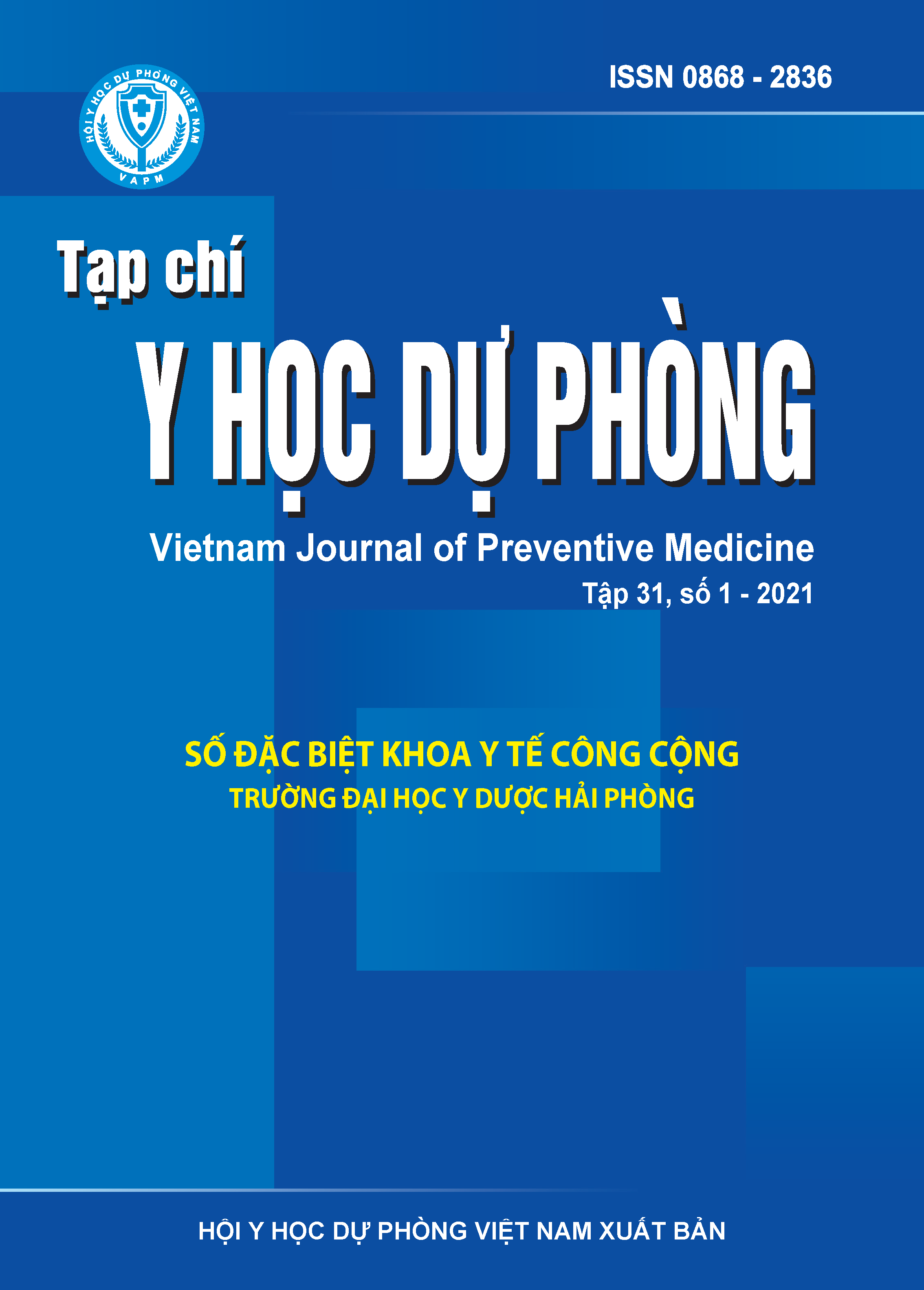Situation of antibiotic resistance and hospital infection control organization structure in Hai Phong International Hospital in 2019
DOI:
https://doi.org/10.51403/0868-2836/2021/64Keywords:
Antibiotic resistant, infection control model, hospital infectionsAbstract
The study retrospectively studied 2021 positive bacterial specimens aims to describe the situation of antibiotic resistance at Hai Phong International Hospital and infection control organization structure at the hospital in 2019. This research used the retrospective method, which described cross-sectional data of the Hospital’s medical records. The results showed that the main infectious agents were Gram (-) (66%) bacteria, of which E.coli accounted for the highest percentage (21.5%). Gram (+) bacteria causing diseases mainly were S.aureus (12.8%) and S. pneumonia (8.0%). S. aureus was the main bacteria found
in purulent specimens (7.8%). E.coli was resistant to ceftriaxone 55.1%, cefuroxime 56.1%, TMP / SMX (67.6%) and ciprofloxacin (56.4%). Klebsiella pneumonia was still highly sensitive, only resistant to TMP / SMX (28.3%), but showed signs of resistance to carbapenem imipenem (9.0%) and meropenem (10.8%). Pseudomonas aeruginosa was most resistant to
ciprofloxacin and levofloxacin with the rates of 20.2% and 22%, respectively. S. aureus had a high rate of resistant MRSA such as penicilline (100%), ciprofloxacin (94%), clindamycin (93%), azithromycin (94%), clarithromycin (89.2%), but was also 100% susceptible to linezolid. The Department of Infection Control at Hai Phong International Hospital has fully implemented its tasks in accordance with the model and process of infection control of the Ministry of Health.
Downloads
Downloads
Published
How to Cite
Issue
Section
License
Publication License No 150/GP-BTTTT signed on May 8, 2014;
Electronic Publication License No 322/GP-BTTTT signed on June 15, 2016.


